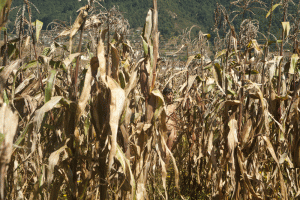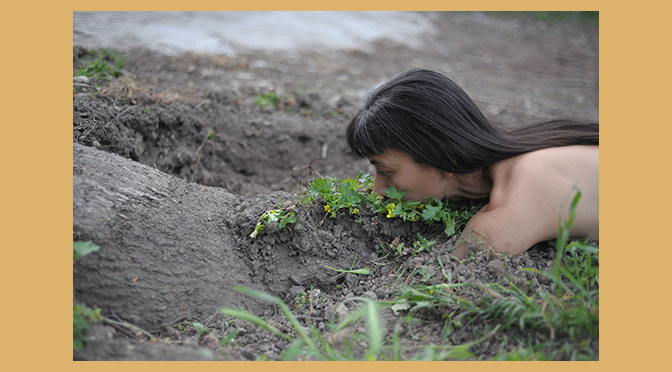
Nella cornice di Artissima 2022 – il PAV è lieto di inaugurare Tierra
PAV – Parco Arte Vivente
presenta
Tierra
Regina José Galindo
Una donna / artista che vuole farci conoscere le atrocità commesse da una certe moltinazionali contro gli indigeni del Centro America; come se quelle perpetrate dagli spagnoli dalla scoperta dell’America non fossero già state sufficientemente pesanti.
a cura di Marco Scotini
5 novembre 2022 – 26 febbraio 2023
Inaugurazione e performance con l’artista:
venerdì 4 novembre 2022, ore 18
PAV – Parco Arte Vivente
via Giordano Bruno 31, 10134, Torino
www.parcoartevivente.it
Venerdì 4 novembre 2022, nella cornice di Artissima, il PAV è lieto di inaugurare Tierra, mostra personale dell’artista Regina José Galindo, artista guatemalteca che da più di vent’anni indaga il tema della giustizia sociale attraverso pratiche performative il cui baricentro espressivo si situa nella relazione tra il corpo e l’ambiente.
L’esposizione, a cura di Marco Scotini, fa seguito a quelle dedicate all’artista indiana Navjot Altaf e all’artista indonesiana Arahmaiani nell’indagare le specifiche relazioni che intercorrono tra sfruttamento ambientale e soggetti oppressi, le donne e le minoranze, decentrando lo sguardo oltre i confini geografici e culturali del cosiddetto occidente.
La mostra a cura di Marco Scotini ripercorrerà la ventennale carriera di Galindo (vincitrice del Leone d’Oro alla 51° Biennale di Venezia come miglior giovane artista) focalizzandosi sui modi in cui ogni suo contatto con gli elementi naturali vada letto in chiave intersezionale e militante.
E tra tutti gli elementi naturali, la terra che dà il titolo alla mostra ha un suo particolare statuto: l’approccio di Galindo si sottrae a qualsiasi declinazione essenzialista del rapporto tra terra e corpo femminile, anticipando e nondimeno influenzando le più recenti tendenze della ricerca artistica ecofemminista.
Il percorso esporrà i risultati di un approccio evolutosi nel corso degli anni, dal focus iniziale verso le problematiche politico-sociali guatemalteche, all’attenzione (site-specific) verso i contesti e le comunità con cui l’artista si trova ad interagire.
Infine, in occasione dell’opening, una performance inedita basata sulla materia fossile connette il percorso espositivo all’attuale crisi umanitaria ed energetica.
Originaria di Guatemala City (1974), Regina José Galindo utilizza il corpo come strumento privilegiato di una pratica artistica intensa, inaugurata alla fine degli anni Novanta; lontana dalle ricerche formali condotte nelle scuole d’arte tradizionali, sin da subito Galindo utilizza l’arte come modalità di comunicazione e azione politica: nata e cresciuta durante la lunga dittatura militare guatemalteca, assiste sin dalla più tenera età ad una guerra civile connotata da feroci pratiche repressive, sino alla pulizia etnica nei confronti delle popolazioni indigene.
Cuore fisico e concettuale della mostra, la performance Tierra (2013) testimonia il trauma che innerva la memoria del suo popolo.
Un trauma in cui la terra è baricentro di crimini consumati aggredendo i corpi – la pala meccanica che scava una fossa attorno al corpo di Galindo, allude alle fosse comuni in cui i militari gettavano oppositori politici e persone indigene – quanto sul piano politico ed economico: il colpo di stato che inaugura il regime militare di Carlos Castillo Armas nel 1954, venne sostanzialmente costruito dagli Stati Uniti per tutelare gli interessi della società United Fruit Company.
Parallelamente, in Mazorca (2014) l’azione predatoria e violenta rappresentata dalla pala meccanica si trasla in quattro uomini che recidono con un machete le piante intorno al corpo dell’artista, in piedi al centro di un campo di mais.
Le strategie repressive dei militari annoveravano proprio la distruzione dei campi, fondamentali per il sostentamento della popolazione indigena.
Una minaccia a cui ha fatto seguito, vent’anni dopo il termine del conflitto, da una legge approvata nello stesso 2014 dal Congreso de la República, comunemente nota come legge Monsanto.
Il nome della celebre multinazionale statunitense ci riporta all’inscindibilità di ecologia e politica.
Con la mostra di Galindo, il PAV Parco Arte Vivente ribadisce in maniera particolarmente cristallina il filo conduttore della propria programmazione, affermando che la sensibilità nei confronti dell’ecologia non possa essere in alcun modo scissa da una radicale analisi delle relazioni di potere economico e politico che disegnano il capitalismo contemporaneo.
Nel periodo di apertura al pubblico della mostra, su prenotazione, le AEF Attività Educative e Formative del PAV propongono alle scuole e ai gruppi l’attività laboratoriale Patchwalking – Creazione di nuovi territori OMGFree.
Il bene comune, inteso come totalità planetaria da preservare, sottende un codice collettivo che è proprio di tutte le specie viventi.
Le migrazioni e gli spostamenti producono una continua contaminazione tra locale e globale, per cui le geografie e le culture si ridistribuiscono e mutano secondo criteri di ibridazione, adattabilità e incontro.
Durante il laboratorio, a partire dal valore simbolico della terra, che ciascun gruppo è invitato a portare dal proprio luogo di appartenenza, e attraverso l’utilizzo di pigmenti colorati messi a disposizione, viene prodotto un elaborato collettivo in cui l’esperienza materica con la terra dà vita a una mappatura organica fatta di tracce e traiettorie.
Per partecipare alle attività è necessaria la prenotazione: 011 3182235 – lab@parcoartevivente.it
La mostra è realizzata con il sostegno di Compagnia di San Paolo, Fondazione CRT, Regione Piemonte, Città di Torino.
Image
Regina José Galindo, Mazorca, 2014. Photograph, glossy print on dibond, 150 x 100 cm.
Courtesy the artist and Prometeo Gallery Ida Pisani, Milan-Lucca
________________________
PAV – Parco Arte Vivente
presents
Tierra
Regina José Galindo
curated by Marco Scotini
November 5th 2022 – February 26th 2023
Opening and performance with the artist:
Friday November 4th 2022 at 6 PM
PAV – Parco Arte Vivente
via Giordano Bruno 31, 10134, Torino
www.parcoartevivente.it
As part of Artissima, on Friday November 4th 2022, the PAV is pleased to announce the opening of Tierra, the solo exhibition of the artist Regina José Galindo, a Guatemalan artist who, for over twenty years, has been investigating the subject of social justice through the lens of performative practices whose expressive focal point is the relationship between the body and the environment. The exhibition, curated by Marco Scotini, follows on from those by the Indian artist, Navjot Altaf, and the Indonesian artist Arahmaiani in the investigation of the specific relationships that exist between environmental exploitation and oppressed peoples, women and minorities, decentralising the gaze as it goes beyond the geographical and cultural boundaries of the so-called West.
The exhibition curated by Marco Scotini covers Galindo’s twenty year long career (she won the Leone d’Oro at the 51st Venice Biennale as best young artist), focussing on the ways in which every one of her contacts with natural elements should be read in an intersectional and militant key. Amongst all the natural elements, the earth, that provides the exhibition’s title, has a particular status of its own: Galindo’s approach avoids any essentialist description of the relationship between the earth and the female body, foreshadowing and, equally, influencing the more recent trends of eco-feminist artistic research. The itinerary displays the results of an approach that has evolved over the years, from an initial focus on Guatemalan socio-political problems, to a (site-specific) attention to the contexts and communities with which the artist has found herself interacting. Furthermore, as part of the opening, the exhibition connects to the current humanitarian and energy crisis through a new performance based on fossil matter.
Originally from Guatemala City (1974), Regina José Galindo uses the body as the preferred instrument of an intense artistic practice which began towards the end of the 1990s. Far from the formal type of research performed by the traditional art schools, Galindo immediately used art as a means of communication and political action. Born and brought up during the long Guatemalan military dictatorship, she was a witness from a very early age of the civil war characterised by repressive practices through to the ethnic cleansing of the indigenous populations.
The physical and conceptual heart of the exhibition, the Tierra (2013) performance testifies to the trauma that innervates the people’s memories. A trauma in which the earth is the barycentre of crimes carried out by attacking bodies – the mechanical digger that digs a ditch around Galindo’s body alludes to the mass graves into which the military threw both political opponents and indigenous people – on both political and economic levels. The coup d’etat that inaugurated Carlos Castillo Armas’s military regime in 1954 was effectively constructed by the United States in order to protect the interests of the United Fruit Company.
Equally, in Mazorca (2014), the predatory and violent act represented by the mechanical digger turns into four men with machetes who cut down the plants around the artist’s body as she stands in the middle of a field of maize. The military’s repressive strategies include precisely the destruction of the fields that are fundamental for sustaining the indigenous population. A threat that was followed up, twenty years after the end of the conflict, by a law passed exactly in 2014 by the Congreso de la República, commonly known as the Monsanto law. The name of this famous American multi-national leads us back to the inseparable nature of ecology and politics. With Galindo’s exhibition, the PAV Parco Arte Vivente confirms the leitmotif of its programming in a particularly clear way, stating that sensitivity to ecological issues can in no way be separated from a radical analysis of the economic and political powers that delineate contemporary capitalism.
In the context of the exhibition AEF, PAV’s Educational and Training Activities, offers schools and groups the workshop activity Patchwalking – Creating New OMGFree Territories. The common good, as a planetary totality to be preserved, underlies a collective code that is proper to all living species. Migrations and displacements produce a continuous contamination between local and global, so geographies and cultures redistribute themself and they change according to criteria of hybridization, adaptability and encounter.
During the workshop, starting from the symbolic value of the soil, which each group is invited to bring from its belonging place, and through the use of colored pigments provided, a collective work is produced in which the material experience with the earth create an organic mapping made of traces and trajectories.
Reservations are required to participate: 011 3182235 – lab@parcoartevivente.it
The exhibition has been realised with the support of the Compagnia di San Paolo, the Fondazione CRT, the Regione Piemonte and the City of Turin.
INFO
PAV Parco Arte Vivente
Centro sperimentale d’arte contemporanea
via Giordano Bruno 31, 10134 Torino
+39 011 3182235 – www.parcoartevivente.it
